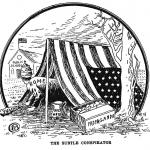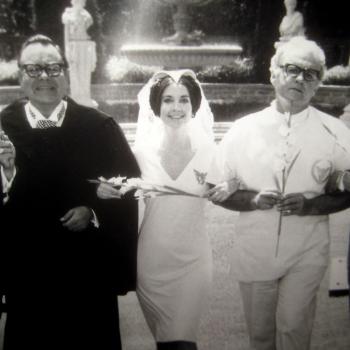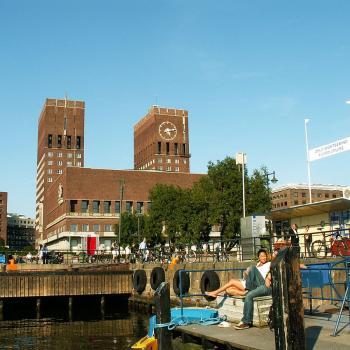That said, the early-20th century was not always a time of supreme reverence. The culture was changing in any number of important ways: two world wars, the rise of mass consumption, increases in education and literacy, among many other things. The Church, still active in the tradition of the Counter-Reformation 400 years prior had not made anything like numerous attempts to weather the storm of modernity. Important pronouncements had been made throughout the 19th century, largely on social and political questions. Aquinas had been made the linchpin of Western theology. Liturgy, in other words, languished in many places. One blogger recalls these times fondly, though without nostalgia:
Pre-Vatican II: I remember taking a missal to church. I amused myself by looking at the pictures and reading Gospel stories while the priest droned on in Latin, a long mumbling dialogue between him and the altar boy. His back was to us and I could not see what was happening. Younger children ate Cheez-its and Cheerios, we older ones looked at picture books or read. Adults nodded off, said their own prayers, perused the parish bulletin or read the local Catholic Tidings. Older women said the rosary to pass the time. Sometimes bells rang, and we all looked up then. I suppose many of the adults knew what was going on, but I didn’t.
There was an attitude of passivity and detachment. Let the priest do it, seemed to be the consensus. There were no demands on anyone else, except monetary support, attendance, monetary support, obeying the rules, monetary support, and being quiet during the liturgy. It was [a] very authoritarian time, with good Catholic families doing whatever Father said to do.
The music then was beautiful. Sometimes there was incense, sometimes there were processions.
People dressed better for services then, but of course that simply gave many the opportunity to gossip and give critical up-and-down once-overs to everyone who entered, and furthered the keeping up with the Joneses mentality. It might have looked like dressing with respect for the Lord, but it was often more about impressing others. Showing off one’s Easter bonnet, one’s Christmas dress. Getting us 4 kids ready for Mass definitely made my mother nervous because of this. We had to look good–because we were being judged.
I made my First Communion before Vatican II. We knelt at the altar rails, and the priest put the Host on our tongues. An altar boy, who was, of course, was always someone I knew from school, held the paten under our chins. Later on at school, the boys snickered and made rude comments about the various parishioners and how stupid they looked, especially us girls. I became too embarrassed to go to Communion, fearing being the butt of jokes and made excuses not to participate.
Aside from the homily, there was no adult catechesis. The expectation was that Father would advise and expound upon the rules, and we would follow his direction without question or understanding. (Reinkat)
This blogger is an iconographer who seems to respect much about the pre-Vatican II Church. What we have here is not a furrowed brow or blind hatred; rather, we have honesty of the sort that becomes difficult through the fog of time. Later on, she makes an important point:
While all of these changes were going on in the Church, our society and culture were undergoing a tremendous transformation. The sexual revolution, protests against war, the pill, questioning authority, and the rise of hedonism and relativity. These things were in the very air. Parishioners could not help but notice and to some extent absorb them. They were actively and aggressively promoted on TV, through media, in the arts, and in schools at every level, particularly college.
I think that the widespread social changes that came about since the time of the Council have far more to do with the decline in attendance and the shortage of vocations than Vatican II ever did. Coming from such a non-engaged, detached version of parish life, many people were tempted away by materialism and easy comfortable lives. There was not a widespread solid foundation for faith.
I submit that without Vatican II, there would have been an even greater hemorrhage of the faithful, especially the young, than there has been. Led by the Holy Spirit, the Council actually saved the Catholic Church and now stands poised to revitalize it as the wisdom contained in the documents becomes more fully understood. (Reinkat)













